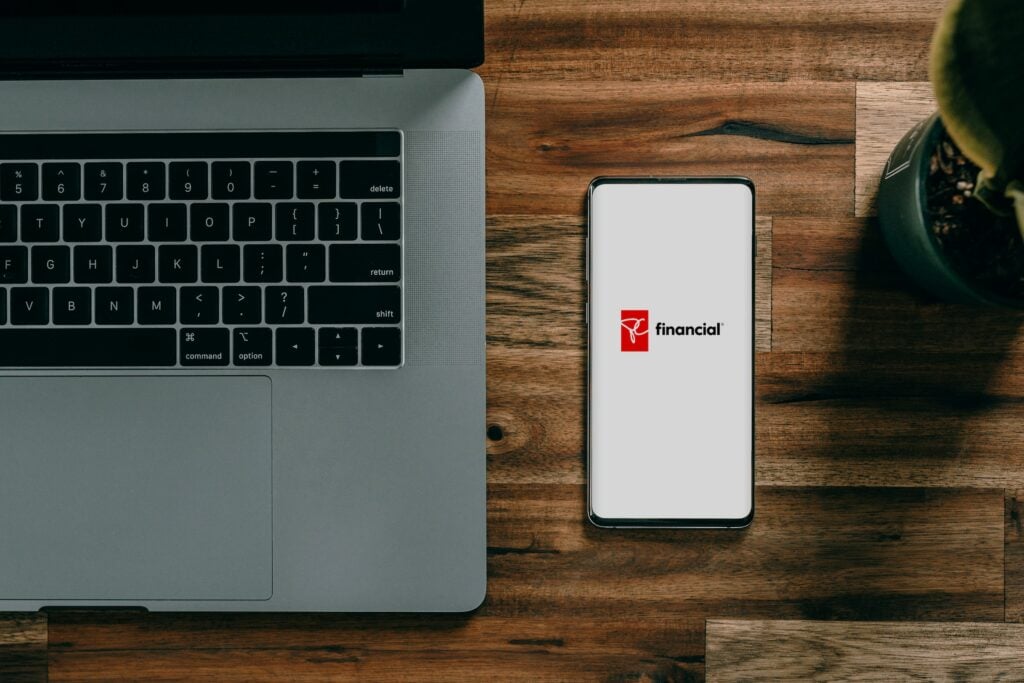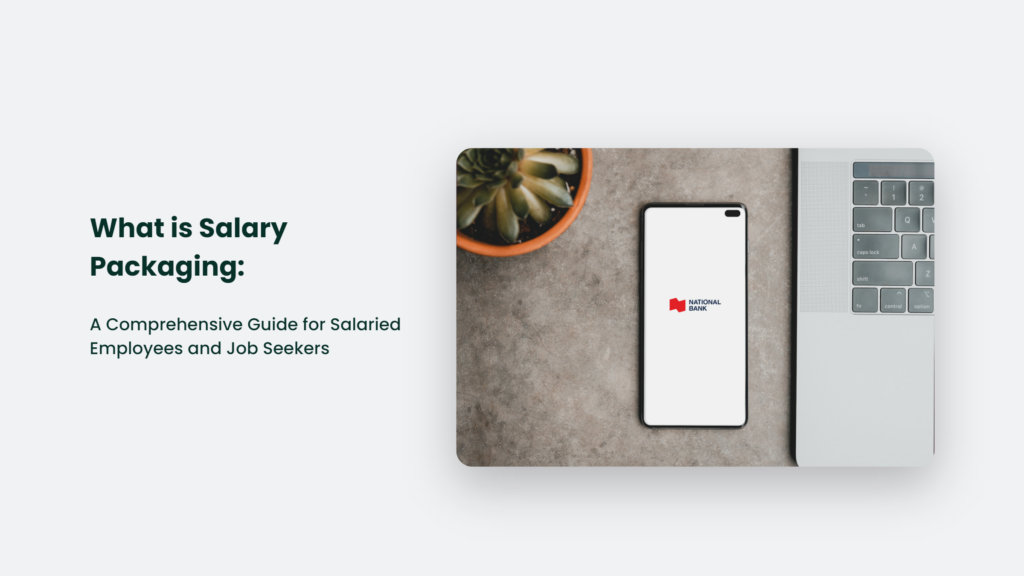

What is Salary Packaging: A Comprehensive Guide for Salaried Employees and Job Seekers

As Seen On
Salary packaging, also known as salary sacrifice or salary exchange, is a concept that has been gaining popularity in recent years. But what exactly is it, and how can it benefit you?
In this article, we will dive deep into the world of salary packaging, exploring its advantages, limitations and how it can impact your financial life. So, buckle up and get ready to learn all about this fascinating financial strategy!

What is Salary Packaging?
Salary packaging includes employee benefits (also called fringe benefits) in an employee remuneration package in exchange for giving up part of the monetary salary. In simpler terms, it’s an arrangement between you and your employer where you agree to receive a portion of your salary as benefits instead of cash.
It can include things like pension contributions, childcare vouchers, annual leave, and more. The main advantage of salary packaging is that it can reduce your taxable income, potentially allowing you to pay less tax and have more money in your pocket.
The Power of Salary Packaging: Examples and Benefits Expanded
Salary packaging can provide numerous advantages for employees, particularly those in higher tax brackets. By reducing your taxable income, you can potentially save thousands of dollars in taxes each year.
Additionally, salary packaging can also help you better manage your cash flow and budget, as you’ll have a clearer understanding of your take-home pay after taxes and benefits are accounted for. Let’s explore these benefits in more detail with some examples:
Superannuation Contributions:
By salary packaging additional superannuation contributions, you can potentially reduce your taxable income and save for your retirement at the same time. For example, if you earn $80,000 annually and decide to sacrifice $10,000 into your superannuation, your taxable income will be reduced to $70,000. It could result in significant tax savings, especially in a higher tax bracket.
Childcare Vouchers:
If your employer offers childcare vouchers as part of your salary package, you can save on childcare costs and reduce your taxable income. For instance, if you’re eligible to receive $243 per month in childcare vouchers, this amount is deducted from your pre-tax salary, reducing your taxable income and saving you hundreds of dollars in taxes each year.
Car Leasing:
Salary packaging a car lease can help you save on a vehicle’s cost while reducing your taxable income. With a novated lease, you can pay for your vehicle expenses using a combination of your pre and post-tax salary, which could reduce your taxable income and the amount of tax you pay. For example, suppose you lease a car worth $30,000, and your annual lease payments are $6,000. In that case, this amount is deducted from your pre-tax salary, reducing your taxable income and potentially saving you thousands of dollars in taxes over the lease term.
These examples illustrate the potential benefits of salary packaging, but it’s essential to remember that individual circumstances will vary. Discussing your options with your employer and considering any limitations before diving into the world of salary packaging is crucial.
By understanding the potential benefits and drawbacks, you can decide whether salary packaging is the right financial strategy.
Salary Packaging and Taxes:
One of the main advantages of salary packaging is that it can reduce your taxable income, potentially allowing you to pay less tax and have more money in your pocket. When your salary package is, your taxable income is reduced, which means you may pay less tax.
However, some benefits may be subject to fringe benefits tax (FBT), which can impact the overall tax savings you receive from salary packaging. It’s also worth noting that salary packaging cannot be applied retrospectively, meaning you must enter into an arrangement with your employer before Affiliate Marketing for Dummies: Start Earning Passive Income Now“>earning the income.
Salary Packaging and Superannuation:
Salary packaging, or salary sacrifice or exchange, can affect your superannuation payments in several ways. When you enter into a salary packaging arrangement with your employer to make additional superannuation contributions from your pre-tax salary, these contributions are taxed at 15% instead of your personal income tax rate.
It can be a tax-effective way to boost your super savings and reduce your taxable income simultaneously.
However, it’s essential to note that salary packaging can also impact your employer’s Superannuation Guarantee (SG) obligations. When your salary package is into superannuation, you effectively reduce the employer SG support you receive, as salary sacrificed contributions are treated as contributions made by the employer and are taken into account when determining if the employer has met their SG obligations.
To avoid this situation, you can ensure that your employment contract requires employer superannuation contributions to be based on your total remuneration package.
Keep in mind that there are limits to how much you can salary sacrifice into superannuation. The combined total of your employer and salary sacrificed contributions must not exceed the concessional contributions cap, currently $27,500 per financial year. Exceeding this cap may result in additional taxes.
In conclusion, salary packaging can affect your superannuation payments by allowing you to make additional pre-tax contributions, potentially leading to tax and increased super savings. However, it can also impact your employer’s SG obligations, so it’s essential to consider this when entering into a salary packaging arrangement.
The Limitations of Salary Packaging: Expanded
While salary packaging can offer numerous benefits, it’s also essential to be aware of its limitations. Here are some additional factors to consider:
Employer Availability:
Not all employers offer salary packaging options, so discussing this with your employer before making any decisions is crucial. Some employers may restrict the types of benefits that can be packaged or may not offer salary packaging at all.
Fringe Benefits Tax (FBT):
Some benefits may be subject to fringe benefits tax (FBT), which can impact the overall tax savings you receive from salary packaging. FBT is a tax paid by employers on certain non-cash benefits provided to employees, such as company cars or private health insurance. Depending on the type and value of the benefits you package, the FBT liability may offset some or all of the tax savings you would otherwise receive.
Retrospective Application:
Salary packaging cannot be applied retrospectively, meaning you must enter into an arrangement with your employer before earning the income. It means you cannot decide on a salary package after receiving it and expect to receive the tax benefits for that period.
Impact on Government Benefits:
Reportable fringe benefits are included in your salary package that exceeds a certain threshold and is counted as income when applying for government benefits. It means receiving a fringe benefit through salary packaging could affect your eligibility for certain government assistance programs.
Reduced Take-Home Pay:
While salary packaging can reduce your taxable income and save you money on taxes, it’s important to remember that it will also reduce your take-home pay. It could impact your ability to meet your day-to-day expenses and should be carefully considered when deciding whether to enter a salary packaging arrangement.
Caps on Concessional Contributions:
If you’re salary packaging additional superannuation contributions, be aware that there are limits to how much you can contribute on a pre-tax basis. The combined total of your employer and salary sacrificed contributions must not exceed the concessional contributions cap, which is currently $27,500 per financial year. Exceeding this cap may result in additional taxes.
While salary packaging can provide significant benefits, it’s essential to consider its limitations and potential drawbacks. Discuss your options with your employer and consider the potential impact on your financial situation before entering into a salary packaging arrangement.
Frequently Asked Questions:
How does salary packaging affect my annual income tax return?
Salary packaging can reduce your taxable income, which may result in a lower tax liability when filing your annual income tax return
What happens to my salary packaging arrangement if I change jobs?
If you leave your current employer, your salary packaging arrangement will typically end, and you’ll need to negotiate a new arrangement with your new employer.
Can anyone take advantage of salary packaging?
While many employees can benefit from salary packaging, it’s essential to check with your employer to see if they offer this option and if you’re eligible
The Bottom Line:
Salary packaging can be a powerful financial tool for employees and job seekers. Understanding how it works and its potential benefits allows you to make informed decisions about your financial future and save thousands of dollars in taxes yearly.
However, discussing your options with your employer and considering any limitations before diving into salary packaging is crucial. With the right knowledge and planning, you can maximise this unique financial strategy and enjoy its benefits.
Konger
Up until working with Casey, we had only had poor to mediocre experiences outsourcing work to agencies. Casey & the team at CJ&CO are the exception to the rule.
Communication was beyond great, his understanding of our vision was phenomenal, and instead of needing babysitting like the other agencies we worked with, he was not only completely dependable but also gave us sound suggestions on how to get better results, at the risk of us not needing him for the initial job we requested (absolute gem).
This has truly been the first time we worked with someone outside of our business that quickly grasped our vision, and that I could completely forget about and would still deliver above expectations.
I honestly can't wait to work in many more projects together!
Disclaimer
*The information this blog provides is for general informational purposes only and is not intended as financial or professional advice. The information may not reflect current developments and may be changed or updated without notice. Any opinions expressed on this blog are the author’s own and do not necessarily reflect the views of the author’s employer or any other organization. You should not act or rely on any information contained in this blog without first seeking the advice of a professional. No representation or warranty, express or implied, is made as to the accuracy or completeness of the information contained in this blog. The author and affiliated parties assume no liability for any errors or omissions.

